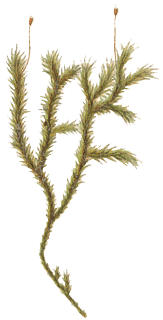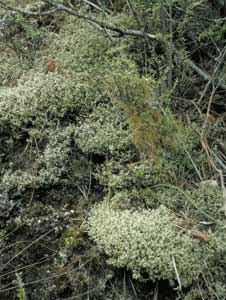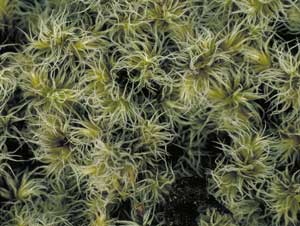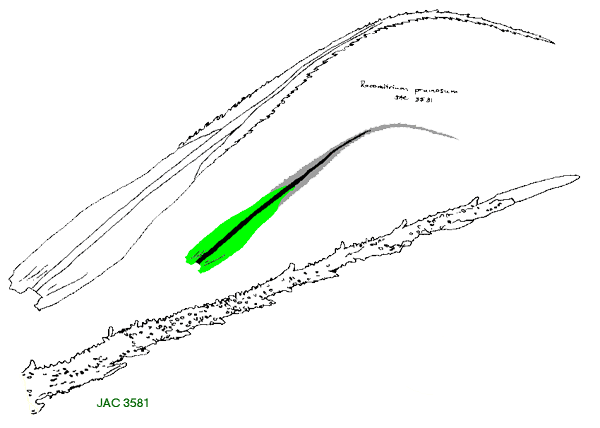
The bryophyte groups – Which bryophyte is it? - Leaves
Racomitrium pruinosum
Racomitrium pruinosum is a widespread moss in the southern hemisphere. It is fairly robust and can form extensive carpets on exposed rocks or soil, especially in mountainous areas. It is pale in colour and quite hoary when dry. The photos below show, on the left, part of an extensive colony of this species and, on the right, a closer view of the colony. These photographs were taken near Rotorua in the North Island of New Zealand.
 |
 Racomitrium pruinosum colony left, close-up, right |
The hoary look is caused by each leaf finishing in a colourless hairpoint that is from one to two millimetres long. The colourless area extends down both sides of the leaf and only the lower third of the leaf contains chlorophyll.
The following drawings, kindly provided by Judith Curnow, show a Racomitrium pruinosum leaf. The specimen on which these drawings are based was collected at an altitude of 1190 metres near the southern end of the South Island of New Zealand. The upper drawing shows a full leaf. In the coloured, schematic drawing, green indicates the chlorophyllous area of the leaf, grey marks the colourless parts of the leaf and the black strip indicates the nerve. There are also some short, crease lines near the base of the leaf. The leaf finishes in a long hairpoint and the nerve extends into the region of colourless cells, but finishes well before the hairpoint's apex. You can also see that the leaf is toothed in its upper half. The third drawing shows a much enlarged view of the upper part of the hairpoint. As well as teeth the hairpoint has numerous smaller projections, or papillae,

![An Australian Government Initiative [logo]](/images/austgovt_brown_90px.gif)

